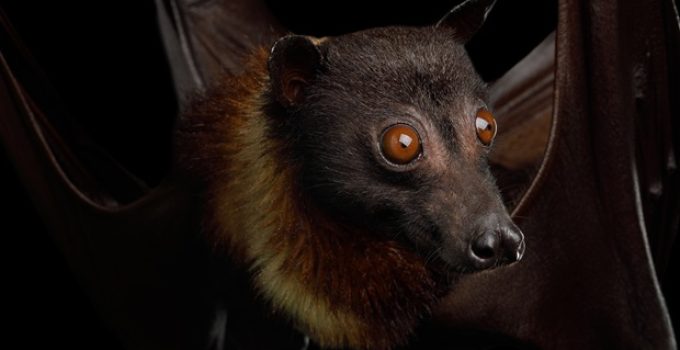Can Bats See In the Dark?
Yes, bats can see in the dark—often better than humans. Although bats are famous for their echolocation abilities, they also have functioning eyes and rely on vision, especially in low-light environments. Their night vision is adapted for navigating forests, caves, and open skies under starlight or moonlight, with variations depending on the species.
Dive Deeper
- Do Bats Really Have Poor Eyesight?
- How Do Bats See in the Dark?
- Do All Bats See Equally Well?
- Bats vs. Humans: Night Vision Comparison
- The Role of Echolocation vs. Vision
- 🎯 Final Thoughts
- 📚 References
👁️ Do Bats Really Have Poor Eyesight?
The idea that bats are “blind” is a myth. In reality, all bat species have eyes and are capable of seeing, though the quality of their vision varies by ecological niche.
- Fruit bats (also called megabats) have large eyes and rely heavily on vision.
- Insect-eating microbats have smaller eyes but still detect motion and light.
| ❌ Myth Busted: The phrase “blind as a bat” is misleading—bats aren’t blind at all.
🌌 How Do Bats See in the Dark?
Bats have evolved several adaptations for scotopic vision, which means they see well in low light:
- High rod cell density in their retinas increases light sensitivity.
- Some bats have a tapetum lucidum, a reflective layer behind the retina that enhances night vision.
- Bats’ pupils can dilate widely to allow maximum light intake at dusk and nighttime.
| 🌙 Statistic: A 2017 study in Science Advances found that some bats can see in near-total darkness—with vision more than 10 times better than humans under low-light conditions [1].
🦇 Do All Bats See Equally Well?
No—vision quality depends on diet, habitat, and activity patterns:
| Type of Bat | Visual Adaptation |
|---|---|
| Fruit bats (Pteropodidae) | Rely on large eyes and daylight vision, some have color vision |
| Insectivorous bats | Use both vision and echolocation; better at night vision than color |
| Cave-roosting species | Primarily rely on echolocation; still possess functional eyes |
| 🔬 Interesting Note: Some species of fruit bats have cone cells that allow them to detect color in dim light—something humans can’t do [2].
📊 Bats vs. Humans: Night Vision Comparison
| Feature | Bats | Humans |
|---|---|---|
| Rod cell density | High | Moderate |
| Tapetum lucidum | Present in some species | Absent |
| Color vision | Limited in microbats, functional in megabats | Present, but ineffective in low light |
| Light sensitivity | Excellent (especially in megabats) | Poor in dark conditions |
| Visual range | Wide for orientation, less detail than humans | High detail in daylight, poor in low light |
| 📈 Statistic: According to research in Current Biology, certain bat species can detect UV light—enhancing their ability to forage in twilight hours [3].
🎧 The Role of Echolocation vs. Vision
Echolocation is a specialized skill that complements vision—not replaces it.
- Bats emit high-frequency sounds and interpret returning echoes to map their environment.
- It’s particularly useful for detecting fast-moving prey, navigating cluttered environments, or hunting in complete darkness.
- However, echolocation has limited range and cannot detect color, distant landmarks, or open landscapes as well as vision.
Many bats alternate between sight and sound, depending on the context. For instance, fruit bats do not echolocate and rely almost entirely on vision and smell.
🎯 Final Thoughts
So, can bats see in the dark? Absolutely. While echolocation steals the spotlight, vision remains a vital sense for many bat species—especially in low-light environments. Far from being blind, bats possess advanced adaptations that help them navigate, forage, and survive after sunset. Whether roosting in caves or gliding through forests, bats rely on both sight and sound to make sense of their nocturnal world.
📚 References
- Zhao, H., Rossiter, S. J., et al. (2017). “The evolution of color vision in nocturnal mammals.” Science Advances, 3(5), e1602919. https://doi.org/10.1126/sciadv.1602919
- Müller, B., et al. (2009). “Bat eyes have ultraviolet-sensitive cone photoreceptors.” PLOS ONE, 4(7), e6390. https://doi.org/10.1371/journal.pone.0006390
- Suthers, R. A., et al. (2006). “The Integration of Echolocation and Vision in Bats.” Current Biology, 16(2), R59–R61. https://doi.org/10.1016/j.cub.2005.12.019
